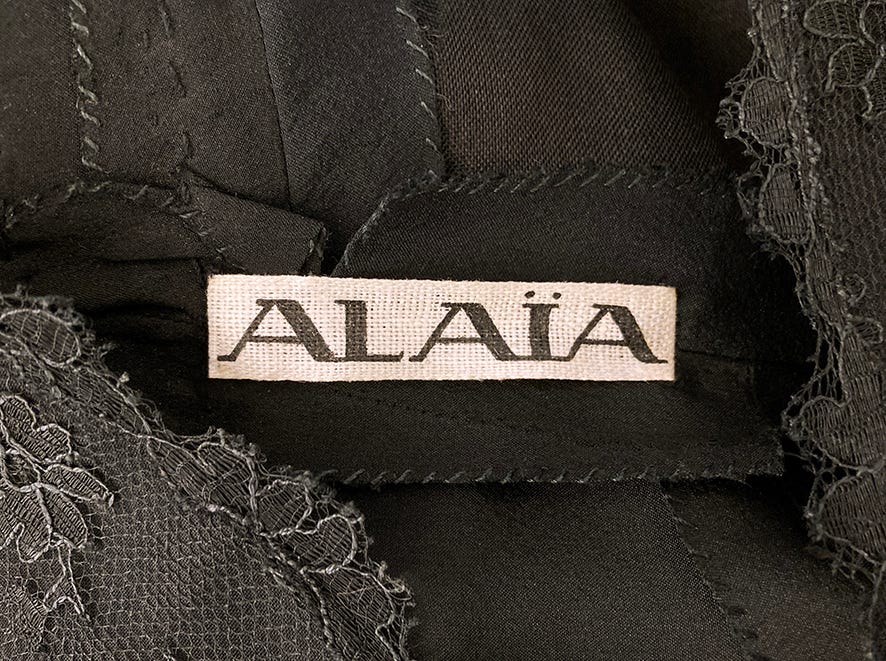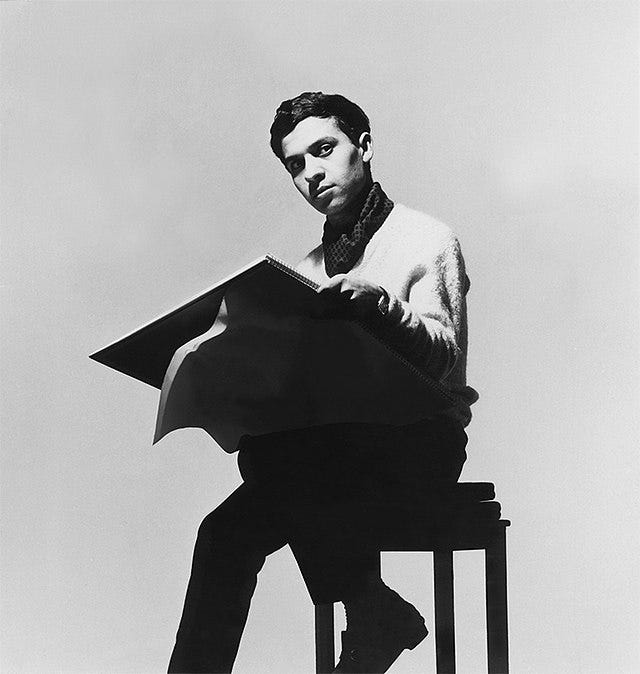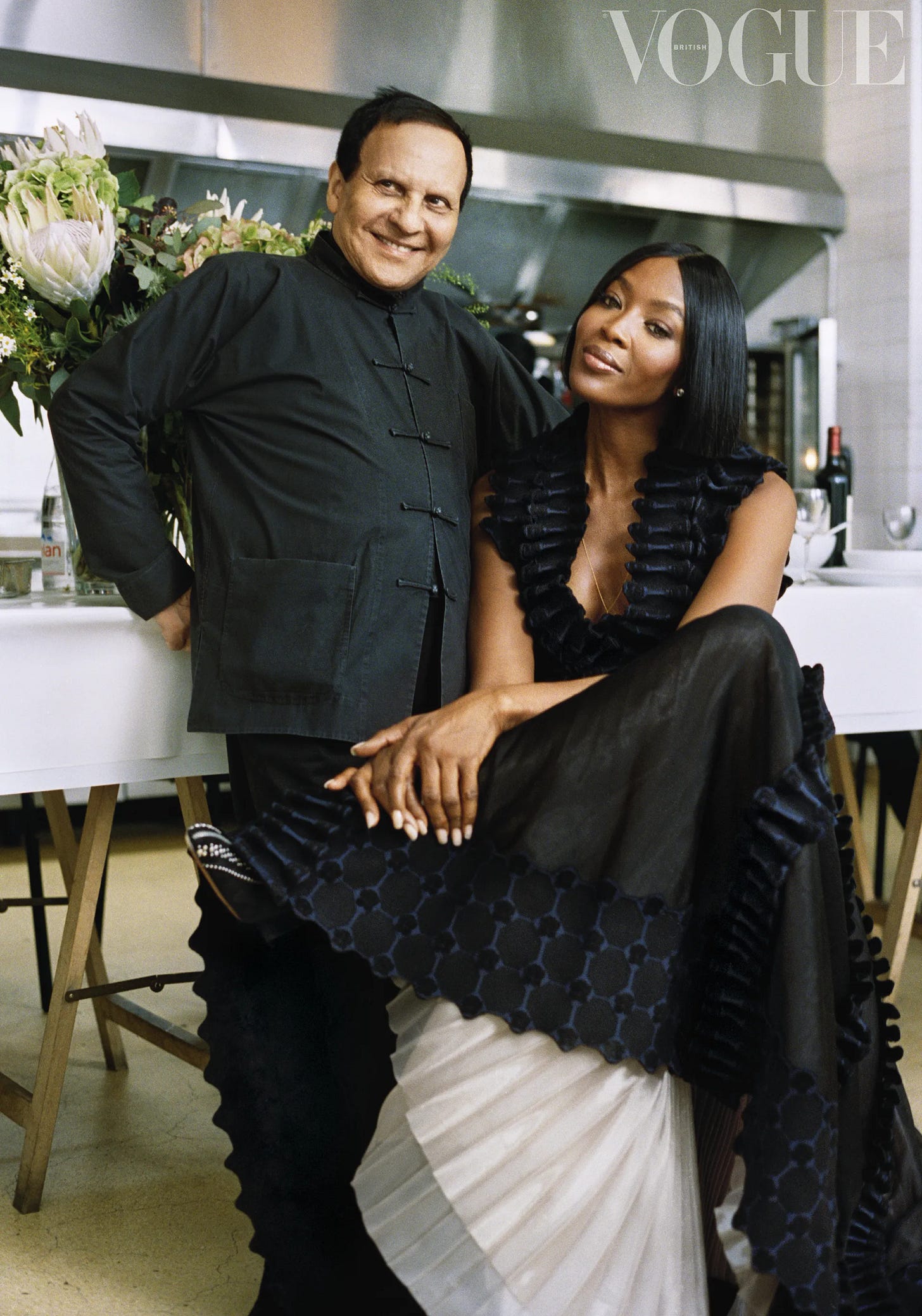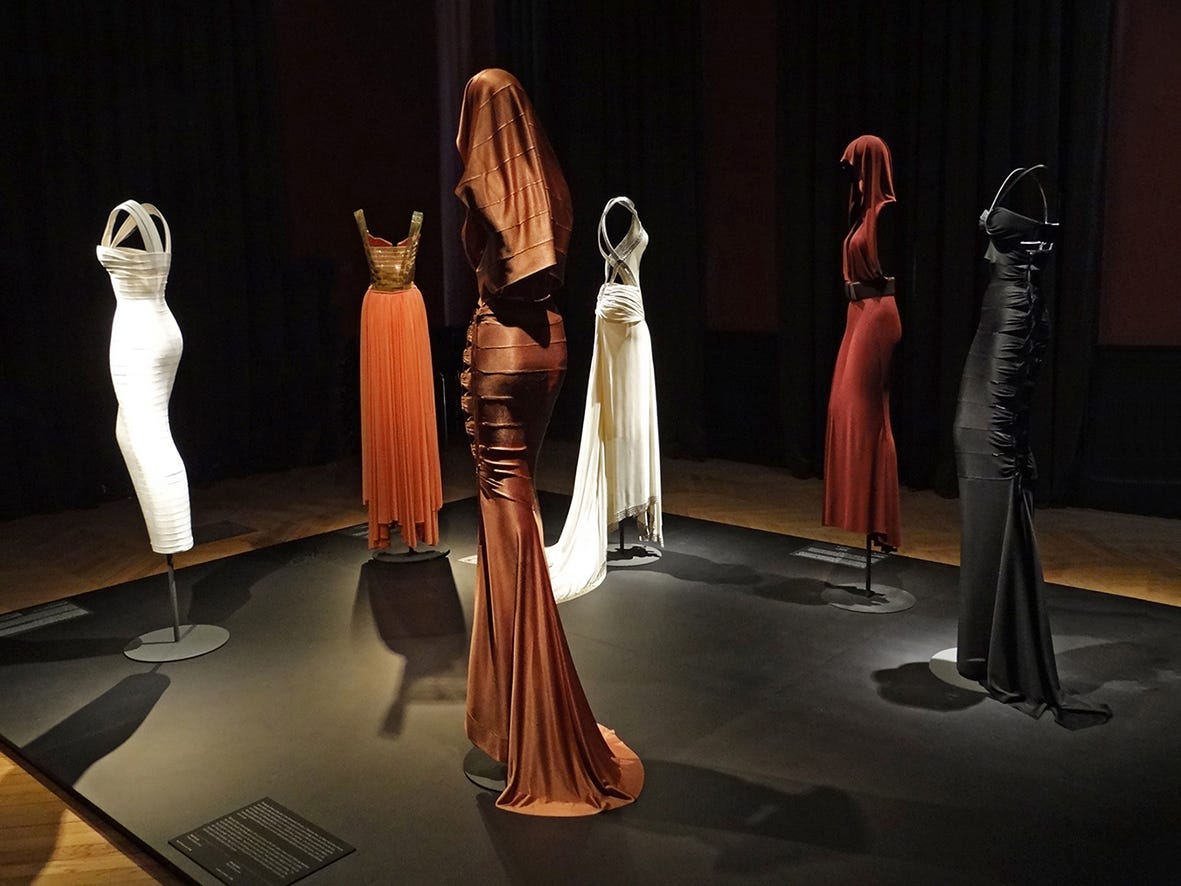Hi everyone, and welcome back! In the ever-evolving landscape of luxury fashion, few names command the reverence and respect that Maison ALAÏA has earned over the decades. The brand's journey from a small Parisian atelier to a global fashion powerhouse represents one of the most fascinating stories in contemporary fashion history. What makes ALAÏA's rise particularly remarkable is how it has maintained its distinctive identity and unwavering commitment to craftsmanship while navigating the commercial pressures of the modern luxury market. This exploration delves into the multifaceted story of Maison ALAÏA, examining the visionary behind the brand, its signature aesthetic, celebrity connections, business evolution, and enduring cultural impact.
The Visionary: Azzedine Alaïa's Origins and Philosophy
The story of Maison ALAÏA begins with its founder, Azzedine Alaïa, whose personal journey and artistic vision would come to define the brand. Born on February 26, 1935, in Tunis, Tunisia, Alaïa's path to fashion greatness was anything but conventional. Originally trained as a sculptor at the Tunis Institute of Fine Arts, this early artistic education would profoundly influence his approach to fashion design throughout his career.
In 1956, Alaïa made the pivotal decision to move to Paris, the epicenter of global fashion. His early career included a brief stint at Christian Dior, where he was reportedly fired after just four days, followed by three seasons working for Guy Laroche starting in 1958. These formative experiences in established fashion houses, though sometimes challenging, helped Alaïa develop his technical skills while simultaneously crystallizing his independent vision.
It wasn't until 1979 that Alaïa opened his first atelier in his small rue de Bellechasse apartment in Paris. This intimate setting became the birthplace of his distinctive design philosophy. Working directly with clients, Alaïa developed a profound understanding of the female form and how clothing could enhance rather than simply adorn it. His first ready-to-wear collection launched in 1980, marking the beginning of his commercial presence in the fashion world.
What truly set Alaïa apart was his approach to design. Unlike many designers who sketch their creations, Alaïa worked directly with fabric on live models, draping, cutting, and pinning materials to achieve the perfect fit. This hands-on methodology reflected his sculptor's training and resulted in garments that celebrated the female form with unprecedented precision and reverence.
Alaïa's philosophy rejected the conventional wisdom of the fashion industry. He famously refused to adhere to the traditional fashion calendar, presenting collections only when he felt they were ready rather than conforming to industry-dictated seasons. This defiance of industry norms extended to his rejection of advertising and his selective approach to press coverage. For Alaïa, the integrity of the design and the relationship between the garment and its wearer always took precedence over commercial considerations.
The ALAÏA Aesthetic: Defining a Signature Style
The ALAÏA aesthetic is instantly recognizable, characterized by a masterful understanding of the female form and technical innovations that have influenced generations of designers. Dubbed "The King of Cling" for his body-conscious designs, Alaïa created garments that celebrated rather than concealed the body's natural contours.
Central to the ALAÏA aesthetic is the concept of the "second skin." Using innovative stretch fabrics, particularly his signature knits and leathers, Alaïa created garments that moved with the body rather than restricting it. His designs achieved the seemingly impossible feat of being simultaneously form-fitting and comfortable, sensual and empowering.
Technical innovation was a hallmark of Alaïa's work. His pioneering use of materials such as stretch leather, bandage dresses, and laser-cut techniques demonstrated his constant pursuit of new ways to realize his vision. The famous "bandage dress," which later inspired designers like Hervé Léger, exemplified Alaïa's ability to engineer garments that sculpted the body while allowing freedom of movement.
Signature elements of the ALAÏA aesthetic include meticulous seaming techniques that accentuate the female form, strategic use of zippers as both functional and decorative elements, and a preference for neutral colors that allow the masterful cut and construction to take center stage. The brand's designs often feature circular skirts, fitted waists, and strategic cutouts that reveal glimpses of skin while maintaining an overall sense of elegance and refinement.
Perhaps most remarkably, ALAÏA designs possess a timelessness that transcends trends. A dress from the 1980s can appear as fresh and relevant today as when it was first created, a testament to Alaïa's focus on enduring design principles rather than fleeting fashion moments. This timelessness has contributed significantly to the brand's enduring appeal and the collectible nature of its pieces.
The Celebrity Connection: From Grace Jones to Modern Icons
The relationship between ALAÏA and celebrities has been a crucial factor in the brand's rise to prominence. Unlike many luxury brands that actively court celebrity endorsements, ALAÏA's celebrity connections developed organically through personal relationships and a genuine appreciation for the designer's work.
The 1980s marked a turning point for ALAÏA's visibility, as influential figures in entertainment and fashion discovered his designs. Grace Jones, with her avant-garde aesthetic and powerful presence, became an early and iconic ambassador for the brand, memorably wearing ALAÏA designs in the James Bond film "A View to a Kill." Other early supporters included Madonna, Tina Turner, and Stephanie Seymour, all of whom were drawn to the empowering nature of Alaïa's body-conscious designs.
Perhaps no celebrity relationship has been more significant to the ALAÏA legacy than that with supermodel Naomi Campbell. Their connection transcended the typical designer-model dynamic, with Campbell referring to Alaïa as "Papa" and the designer considering her like a daughter. This personal bond translated into professional collaboration, with Campbell walking in numerous ALAÏA shows and wearing his designs on red carpets for over 25 years. The authenticity of this relationship resonated with the public and reinforced the perception of ALAÏA as a brand built on genuine connections rather than marketing strategies.
In more recent years, a new generation of celebrities has embraced ALAÏA, including Rihanna, Lady Gaga, and Michelle Obama. The fact that the brand appeals to such diverse figures, from pop stars to first ladies, speaks to its versatility and enduring relevance. What unites these celebrity devotees is their appreciation for ALAÏA's combination of sensuality, strength, and impeccable craftsmanship.
The celebrity connection to ALAÏA is characterized by remarkable loyalty. Unlike the typical pattern of celebrities constantly rotating through different designers, ALAÏA clients tend to develop long-term relationships with the brand. This loyalty speaks to the emotional connection wearers develop with ALAÏA garments and the confidence they inspire.
Business Evolution: From Independent Couturier to Luxury House
The business evolution of Maison ALAÏA represents a delicate balance between maintaining creative integrity and achieving commercial success. Beginning as a private couturier dressing an elite clientele that reportedly included Greta Garbo, the brand gradually expanded its commercial presence while preserving its distinctive identity.
By 1988, ALAÏA had opened boutiques in New York City, Beverly Hills, and Paris, signaling its growth from a Parisian atelier to an international luxury brand. Despite this expansion, Alaïa maintained tight control over production and distribution, ensuring that quality was never compromised for the sake of scale.
A significant turning point in the brand's business evolution came in 2000 when ALAÏA partnered with the Prada Group. This relationship provided the brand with additional resources and infrastructure while allowing Alaïa to maintain creative control. The partnership lasted until 2007, when luxury conglomerate Richemont acquired the brand.
Under Richemont's ownership, ALAÏA has experienced substantial growth while preserving its distinctive character. According to industry reports, the business grew by approximately 400 percent in the decade following the acquisition. This growth has been achieved without sacrificing the brand's commitment to quality or its selective distribution strategy.
Following Azzedine Alaïa's death in November 2017, the brand faced the challenge of continuing without its visionary founder. After a period of producing collections based on archival designs, Richemont appointed Pieter Mulier as Creative Director in 2021, marking a new chapter in the brand's evolution.
Mulier's appointment followed a nearly two-year search by CEO Myriam Serrano, who sought a designer who could honor Alaïa's legacy while moving the brand forward. As Serrano explained in a Vogue Business interview, she needed "someone who understands the legacy of the house without wanting to be a superstar, so it's not Alaïa-by-someone, but someone really understanding the house."
The Creative Direction: Preserving and Evolving the Legacy

The appointment of Pieter Mulier as Creative Director in 2021 represented a pivotal moment in ALAÏA's history. As the first designer to lead the house following Azzedine Alaïa's passing, Mulier faced the formidable challenge of honoring a singular creative legacy while ensuring the brand's continued relevance.
Mulier's background made him uniquely suited to this challenge. Having spent 16 years as Raf Simons' right-hand man, working at Jil Sander, Christian Dior, and Calvin Klein, Mulier developed a reputation as a "designer's designer" with deep technical knowledge and a collaborative approach. Though not a household name, his expertise and respect for craft aligned with ALAÏA's values.
Since taking the helm, Mulier has approached his role with reverence for the house's heritage while introducing subtle evolutions. As he told Vogue, "I try to keep a little bit of the family aspect of Alaïa in the studio. Everything is on a human scale." This philosophy echoes Alaïa's own approach to fashion as an intimate, human-centered craft rather than an industrial process.
Mulier's collections for ALAÏA have been characterized by what critics describe as a melding of Alaïa's obsessions and his own. His Winter/Spring 2023 collection, for example, was praised for balancing polished refinement with raw, unfinished elements, a tension that resonates with Alaïa's own work. The collection featured geometric shapes, strategic draping, and the sensuality that has always been central to the ALAÏA identity.
Particularly notable is Mulier's approach to the brand's archives. Rather than simply reproducing iconic pieces, he has engaged in a dialogue with them, studying their construction "as an architect might study French cathedrals," according to Vogue. This deep understanding allows him to reference the past while creating designs that feel contemporary and forward-looking.
The preservation of Alaïa's legacy extends beyond the creative studio. The Fondation Azzedine Alaïa, established after the designer's death, plays a crucial role in maintaining his cultural and artistic contributions. The foundation preserves his personal collection of fashion, art, and design, organizes exhibitions, and supports educational initiatives, ensuring that Alaïa's influence continues to inspire future generations.
The ALAÏA Consumer: Understanding the Appeal
The ALAÏA customer represents a distinct segment within the luxury market, characterized by sophisticated taste, appreciation for craftsmanship, and a desire for timeless rather than trend-driven fashion. Understanding this consumer base provides insight into the brand's enduring appeal and continued growth.
Unlike many luxury brands that target specific age demographics, ALAÏA appeals to a psychographic united by values rather than age or income brackets. The brand attracts women who view fashion as an investment, both financially and emotionally. An ALAÏA garment is purchased not for a season but for a lifetime, with many pieces becoming heirlooms passed between generations.
The emotional connection consumers develop with ALAÏA pieces is particularly noteworthy. Women often describe feeling simultaneously protected and empowered in Alaïa's designs, a paradox that speaks to the psychological dimension of the brand's appeal. The precision fit and body-conscious silhouettes create a sense of security and confidence that transcends mere aesthetics.
From a market positioning perspective, ALAÏA occupies a unique niche within the luxury landscape. While estimates suggest it holds approximately 2% market share compared to industry leaders like Gucci and Louis Vuitton, its influence far exceeds its size. The brand maintains an air of exclusivity not through artificial scarcity but through genuine rarity resulting from its uncompromising production standards.
The investment value of ALAÏA pieces has contributed to the brand's appeal among discerning consumers. Vintage ALAÏA garments often appreciate in value, with iconic pieces from the 1980s and 1990s commanding premium prices in the resale market. This financial dimension reinforces the perception of ALAÏA as a wise investment rather than a frivolous expense.
The brand's selective distribution strategy has preserved its exclusivity while allowing for strategic growth. Rather than pursuing aggressive retail expansion, ALAÏA has maintained a curated presence in key luxury markets, ensuring that the purchase experience reflects the brand's values of intimacy and personal connection.
Cultural Impact: ALAÏA Beyond Fashion
The influence of Maison ALAÏA extends far beyond the realm of fashion, permeating broader cultural conversations about art, design, femininity, and the body. This cultural impact has been instrumental in elevating the brand from a fashion label to a cultural institution.
Recognition of Alaïa's contributions came early in his career. In 1984, he was voted Best Designer of the Year and Best Collection of the Year at the Oscars de la Mode by the French Ministry of Culture, establishing his significance within the fashion establishment despite his outsider approach. Later, he received the prestigious Knight of the Legion of Honor, further cementing his status as a cultural figure of importance.
The representation of ALAÏA in popular culture has contributed significantly to its mystique. The brand entered mainstream consciousness through films like "Clueless," in which the protagonist famously refuses to kneel while being robbed because she's wearing an Alaïa dress ("It's like a totally important designer"). This moment, while humorous, reflected the reverence ALAÏA garments inspire and introduced the brand to audiences beyond the fashion cognoscenti.
Museums around the world have recognized Alaïa's work as worthy of serious artistic consideration. Major exhibitions at institutions like the Design Museum in London have presented his creations not merely as fashion items but as significant cultural artifacts that reflect changing attitudes toward the female body, craftsmanship, and beauty.
The influence of ALAÏA on other designers represents perhaps the most profound aspect of its cultural impact. Countless contemporary designers cite Alaïa as an inspiration, with his technical innovations and body-conscious aesthetic informing collections across the fashion spectrum. This influence ensures that even as fashion trends come and go, the core principles of ALAÏA design continue to shape the industry's direction.
The Digital Age: ALAÏA's Adaptation to Modern Retail
For a brand built on tactile experiences and personal connections, the digital age presented both challenges and opportunities. ALAÏA's approach to digital transformation reflects its broader philosophy: embracing innovation while remaining true to its essential character.
The brand's e-commerce strategy has evolved cautiously, balancing the need for digital presence with the desire to maintain the special nature of the ALAÏA experience. The online shopping environment has been designed to communicate the brand's values of craftsmanship and timelessness, with detailed product information that educates consumers about the techniques and materials that make each piece special.
Social media has provided a new platform for ALAÏA to share its story and connect with a global audience. Rather than chasing trends or focusing on quantity of content, the brand's digital presence emphasizes quality and authenticity. Archive images of Azzedine Alaïa working in his atelier sit alongside contemporary campaign imagery, creating a sense of continuity between past and present.
The tension between exclusivity and accessibility represents a central challenge for luxury brands in the digital age. ALAÏA has navigated this tension by using digital platforms to educate and inspire rather than simply to sell. By sharing the stories behind its creations, the brand invites consumers into its world while maintaining the mystique that has always been central to its appeal.
Conclusion: Why ALAÏA Continues to Rise
The enduring rise of Maison ALAÏA in an industry defined by constant change speaks to the timeless appeal of its core values: uncompromising quality, celebration of the female form, and a focus on the garment rather than the spectacle surrounding it.
Several key factors have contributed to ALAÏA's continued ascent. First, the brand's commitment to craftsmanship provides a compelling alternative in an era of fast fashion and disposable consumption. The time-intensive nature of ALAÏA's production process results in garments that stand apart from mass-produced luxury, appealing to consumers increasingly concerned with sustainability and longevity.
Second, the brand's focus on the female body rather than fleeting trends has created a design language that transcends time. An ALAÏA silhouette is recognizable regardless of when it was created, giving the brand a coherence and consistency that many luxury houses struggle to maintain through designer transitions and market pressures.
Third, the authentic relationships the brand has cultivated, from its celebrity connections to its loyal customer base, have created a community united by genuine appreciation rather than marketing manipulation. In an age of manufactured influencer partnerships, this authenticity resonates powerfully with consumers seeking meaningful connections with the brands they support.
The future of Maison ALAÏA under Pieter Mulier's creative direction and Richemont's ownership looks promising. By honoring Azzedine Alaïa's legacy while thoughtfully evolving for contemporary relevance, the brand is positioned to continue its rise while maintaining the distinctive character that has made it a singular presence in the fashion landscape.
In a fashion world often dominated by logos, marketing campaigns, and social media moments, ALAÏA offers something different: a focus on the intimate relationship between a garment and its wearer. This fundamental commitment to the essence of clothing, to making women feel simultaneously protected and powerful, explains why ALAÏA has risen from a small Parisian atelier to a global fashion powerhouse and why its ascent shows no signs of slowing.
References:
Vogue Business: "What to expect from Mulier's Alaïa" (March 2021)
AnOther Magazine: "Pieter Mulier Is Taking Alaïa to Its Future" (July 2022)
Vogue: "Alaïa's Pieter Mulier Is Following a Legend—And Pushing the Storied House Into the Future" (September 2023)
W Magazine: "Azzedine Alaïa's Greatest Red Carpet Hits: From Naomi Campbell to Rihanna" (November 2017)
Fashion Strategy Weekly: "The Value of Guided Content: A Brief Case Study of Maison Alaïa" (April 2024)
Business of Fashion: "Will Richemont Ever Scale the Alaïa Business?" (June 2017)











